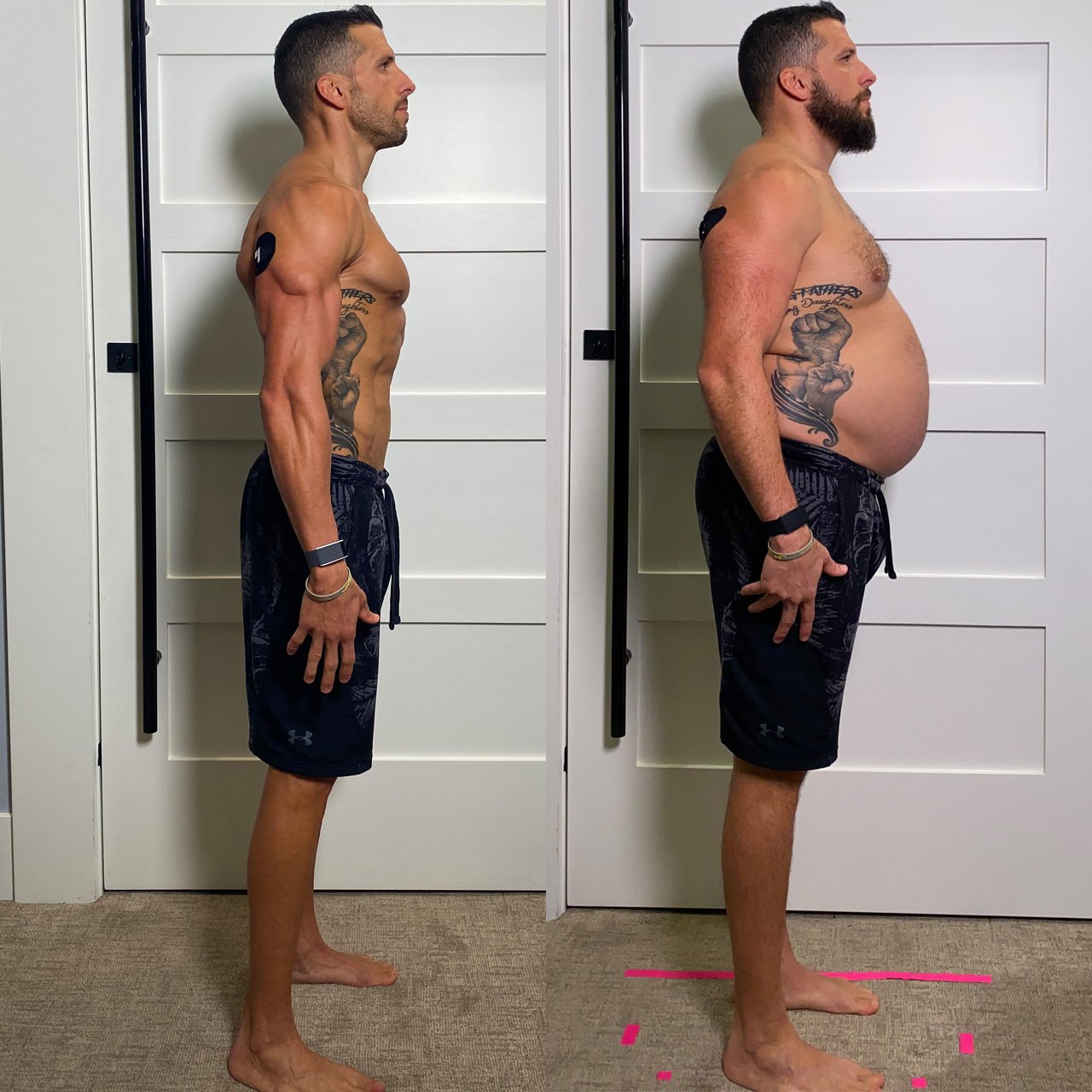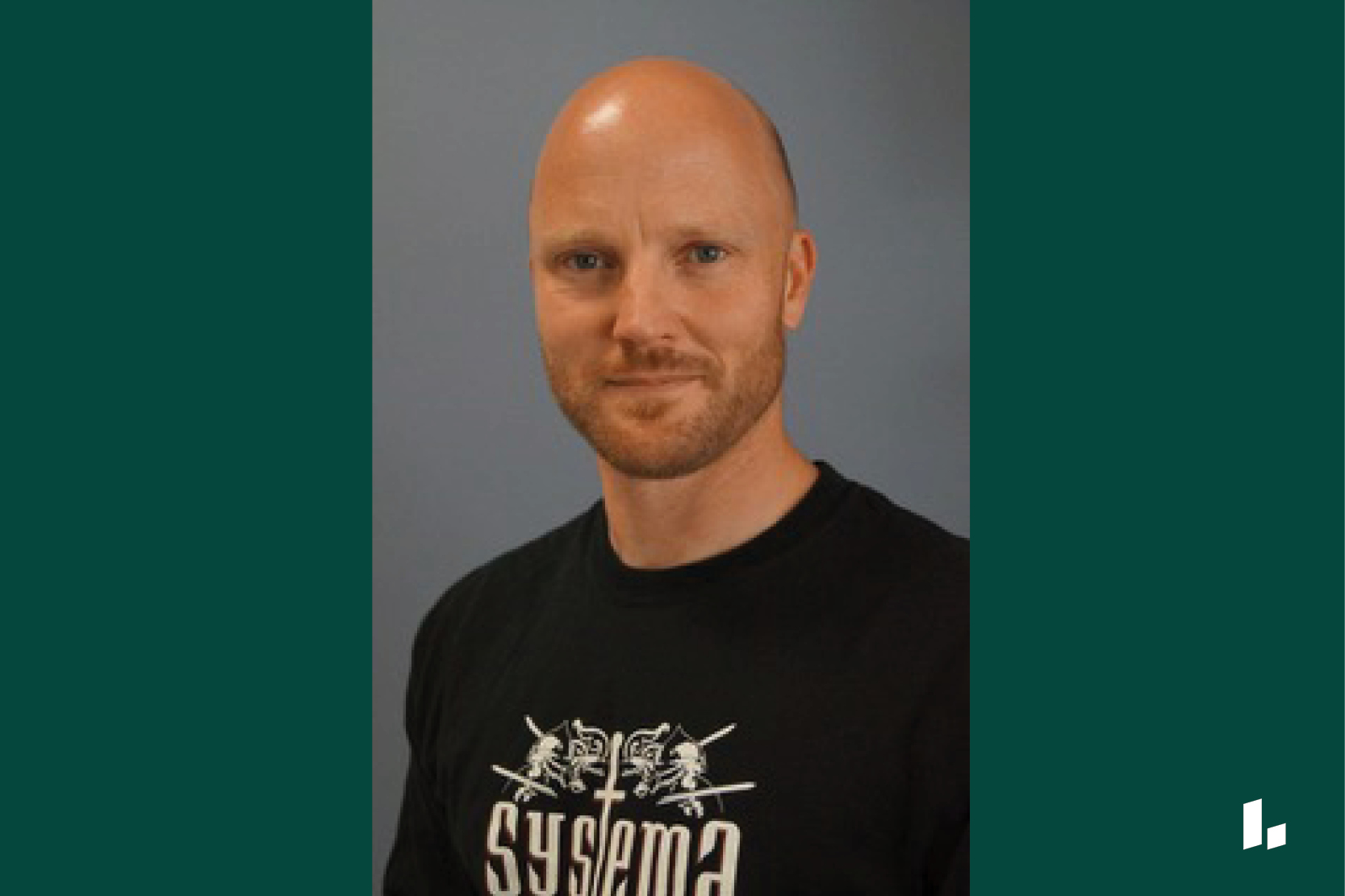“People say they get a new perspective on life after a near-death experience, but what if you could simulate a near-death experience and get the same positive result,” imagines Cory Stout, a Venice Beach-based Levels customer and Founder/Captain of Woodies, a top seller of wood sunglasses. “You don’t actually have to have diabetes to get the benefits of prioritizing metabolic heath.”
A firm believer in self-improvement through data, Cory describes himself as the type of person to always put himself through quantitative health challenges. Cory initially found out about Levels through the Wearable Challenge, a 28-day accountability challenge that has participants deposit a lump-sum up-front, and they’re refunded a portion of that total each day if they stay within a metabolically healthy range on the Levels app.
“I was surprised to see how not only different foods affected my blood sugar, but sleep, wine, and stress had their impacts. I’ve been underestimating the possibility of health metrics my entire life. Now, I have a more precise estimation.”
“I was hooked on the idea of this challenge,” says Cory. “I was surprised to see how not only different foods affected my blood sugar, but sleep, wine, and stress had their impacts. I’ve been underestimating the possibility of health metrics my entire life. Now, I have a more precise estimation.”
“The combination of tracking and incentive is just freaking brilliant,” says Cory. “People hate to lose. They want to win games; they want something to strive for. If you’re pushing yourself to be metabolically healthy, especially in the context of community gamification, you’re focused on winning. These types of challenges are ripe to create a global movement.”
The Wearable Challenge also enabled Cory to connect with another important facet of his life: his 12-year-old nephew, who was recently diagnosed with Type 1 Diabetes.
“Seeing my family go through the heartbreaking experience just made me want to understand how my nephew feels,” says Cory. “He’s been formally diagnosed with diabetes for about a year, but likely had diabetes or some degree of metabolic dysfunction for years before that, or his entire life.”

Cory and his nephew
Prior to the changes after the Type 1 Diabetes diagnosis, Cory’s nephew Max was bothered by behavioral issues, which Cory believes was linked to his blood sugar being regularly high. His diet consisted of typical kid-foods like high-sugar cereal and desserts after dinner, which only exacerbated the issue. Today, Cory describes his nephew as being a calm and collected kid living a normal life with friends and doing typical kid things like going to sleepovers.
“I don’t wish Type 1 diabetes on anybody, but my nephew getting his metabolic health sorted has been the best thing that’s ever happened to him,” says Cory. “I wanted to walk in his shoes– I started doing everything like sticking myself with the needle, wearing the patch, showering with it, going to the ocean with it. Going through the CGM experience with my nephew was fun. I would let him teach me about stuff I pretended not to know–’you know some fruits are worse than you think!’– and the nuances of applying the CGM. He was really excited to teach me about it.”
Cory was determined to show his nephew that there are people committed to health and what he’s doing is good for life in general, not just for diabetes. As far as discipline goes, Cory says he can convince himself to do anything for a month. The social aspects of wearing a CGM and patch, however, were a unique novel experience. His thoughts often revolved around the social psychology surrounding diabetes.
“I noticed first-hand the attention I got from people wondering if I had diabetes and became aware of the stigma that comes with the condition. The way checking my blood glucose became normalized for me made me think a lot about how any stigma around diabetes prevents otherwise healthy people from taking steps to focus on their metabolic health and ensure their overall well-being.”
Any impetus to make positive changes, Cory posits, such as building healthier eating habits at 12-years-old, should only be viewed through a positive and constructive lens. The insights Cory gained from experiencing the glucose management lifestyle of his nephew have given him profoundly positive results.
Today, both Cory and his nephew share the experience of being metabolically aware of how food can impact their overall well-being and mood, and Cory does not shy away from sharing his story.
“People ask me about glucose constantly and I love telling them about it,” says Cory.”Levels is like a game, it’s fun, it’s cutting edge. Venice Beach is a really fitness and health-conscious neighborhood– it’s a hotbed of innovation and social change. I have no shortage of people asking me about it and wanting to do it themselves.”
Building a Metabolic Health Playbook for the Road
Cory lives the travel and fun-filled lifestyle his company Woodies emphasizes. In his experience with Levels, he gained some unique insights that any globetrotter can utilize.
“I started Levels during one of the most stable environments of my life thanks to the COVID pandemic lockdown,” says Cory. “I’m usually in-and-out of new AirBnBs every week. I saw what my baseline metabolic health was for the first three weeks, and then experienced how haywire my glucose levels could get in the last week, where I flew to London and then Rome.”
Here are a few of his tips.
On Food:
Currently spending time with his girlfriend’s family in Italy, Cory is routinely bombarded with delicious authentic Italian foods that may make your glucose levels spike from just reading this sentence.
“If I had the sensor on me, it would be a disaster right now,” Cory jokes. “I think the key to metabolic health when traveling is looking for la quantita justa– just the right amount– that’s what I repeat to myself when I go through a meal. I want to eat absolutely everything on my plate because it’s delicious, but I try to keep in mind what the right amount for me is.”
If you’re committed to a low-glycemic diet, you can generally find a delicious option that appeals to you wherever you are.
“There’s no excuse for blaming bad diet choices on a culture or location. It’s an easy culprit to try to blame, but it comes down to you. Life always comes down to choices,” Cory explains. “Being in Italy, I have the choice between pasta or a delicious spinach drowned in olive oil. Every culture has a healthy side to it: Mexican food– focus on guac and fajita type stuff. Greek, Mediterranean, and Lebanese food all have phenomenal low-glycemic alternatives.”
Viewing the world through a metabolic lens has given Cory some insight into the Western world’s health problems.
“Surprisingly, the worst food is probably in the Western world,” says Cory. “Everything in the UK is a pie for some reason. In the US, we have low-quality meat wrapped in an abundance of carbs.”
On Sleep:
“I saw my sleep schedule was completely thrown off during time changes, and that had a huge effect on my blood sugar,” says Cory. “This was the first piece of empirical evidence of the negative impacts of jetlag. When I’m on a normal sleep schedule, my body can process my blood sugar to keep me within normal bounds. When jet-lagged, the same food would shoot my levels up like a slingshot.”
Travel Hacks:
“Commit to a fast during airplane time,” recommends Cory. “From gate to gate, just drink water. Suck it up, just do it. There’s no need for energy on a flight, all you’re doing is sitting. I lead the league in water intake. I get the gold medal for trips to the bathroom on the plane.”
“Before I get on a plane, I would probably have something like cheese and nuts,” says Cory. “The last thing I want on a flight is alcohol and sugary stuff. When I get off, I’d have something similar– more nuts like almonds and healthy fats.”
“A tool in my metabolic arsenal I frequently use when I have less control over the ingredients of my food is fasting,” explains Cory. “There is also something about that golden 20-minutes of opportunity after you finish a meal. If you get a little bit of movement, you can help your body clear some glucose and minimize a spike.”
“I’ve also changed my alcohol preferences to be more metabolically healthy because I noticed I feel better overall,” explains Cory. “Alcohol is part of my life that probably won’t go away anytime soon, but I steer completely away from mixed drinks, sugary drinks, or the sweeter European stuff like limoncello and amaretto. Dark, deep, almost bitter red wine tends to have a really positive effect on my blood sugar.”
Final Thoughts
Cory continues to view the world through the lens of self and community improvement. By establishing a firm relationship between food and physiological and mental results, Cory feels much more grounded in his lifestyle decisions. With this metabolic awareness of self, however, Cory feels the weight of the United States’s pressing health issues.
“We need to make some major changes as a country,” says Cory. “Our society normalizes unhealthy lifestyles, and views prescription pills as a routine solution. An ounce of prevention is worth a pound of cure, and that starts with building an awareness of what the problem is. Another cliched expression is ‘what gets measured, gets managed,’ and we really need to normalize and promote at least metabolic awareness if we want to see some change.”
On a lighter note, Cory now playfully imagines others through an imaginary glucose score.
“If I see someone being a real jerk, I just think to myself, that guy’s probably in the 300 mg/dL range,” laughs Cory. “If someone is friendly and calm, like holding a door open for you, I think, thank you, 85 mg/dL glucose level.”
You can catch Cory on Instagram, or visit the library of personal development he’s working on on the Venice Beach boardwalk.









